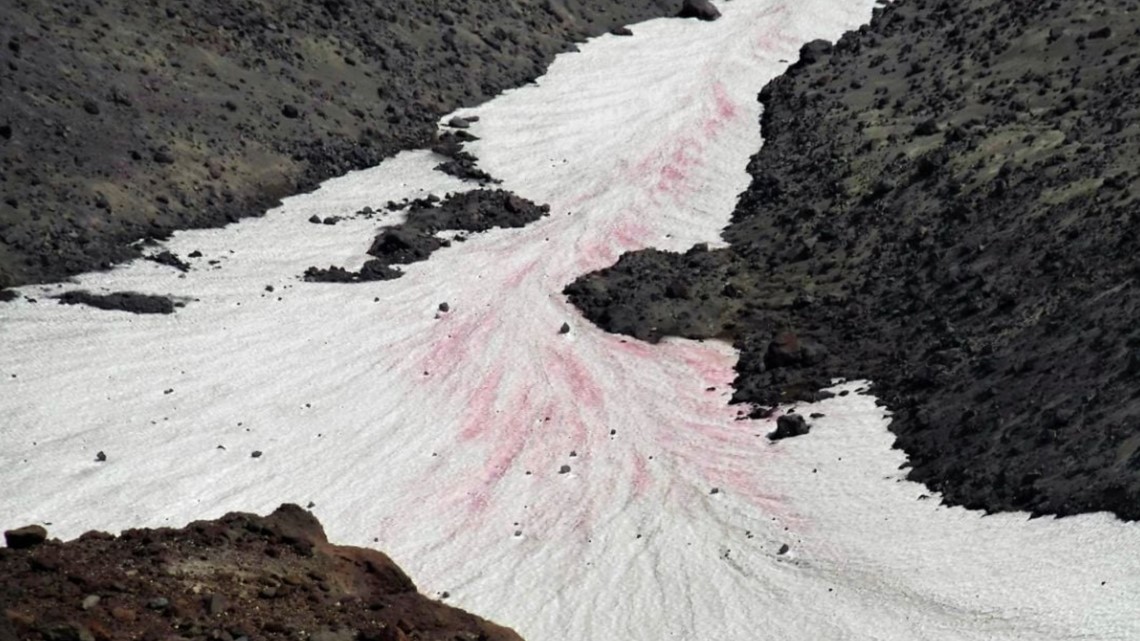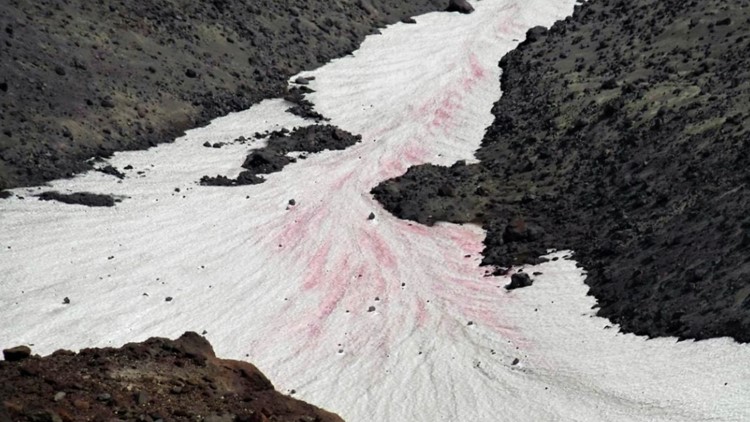Editor's note: The above video on "watermelon snow" originally aired in June 2018.
SEATTLE – If you’ve been hiking recently and spotted some red or pink snow, there’s a chance you saw “watermelon snow.”
U.S. Forest Service officials said Monday that the phenomenon, which is also called “red snow” or “blood snow,” has appeared at Mount St. Helens. Although it isn’t a new phenomenon, it triggered a lot of questions recently for park rangers from curious visitors.
Watermelon snow is caused by cold-loving green algae, according to the forest service. The algae, Chlamydomonas nivalis, thrives in freezing temperatures and cold water and is typically found at high elevations.
The red color comes from carotenoid, which helps protect the algae’s chlorophyll from heat and UV radiation, according to Yosemite National Park. The pigment dyes the surrounding area a darker color, making the snow appear red.


However, officials say the effect could also lead to more rapid glacial melt since the pigment allows the snow to heat up faster.
If you see pinkish snow, don’t eat it. Some people say it smells like watermelon, but forest service officials warn it could make you sick.


